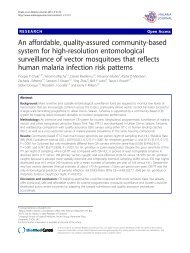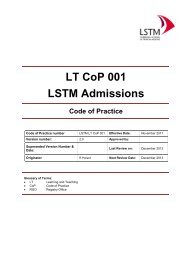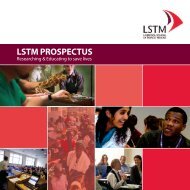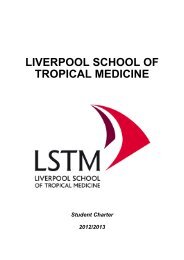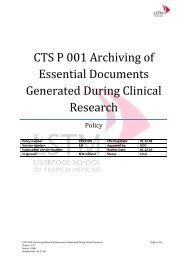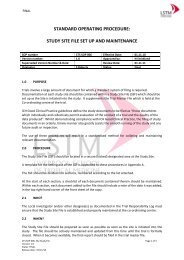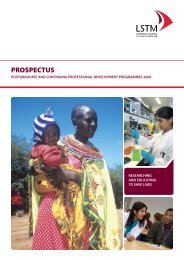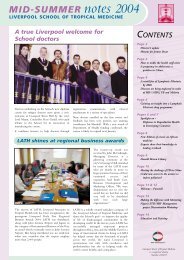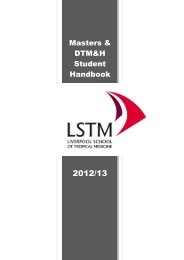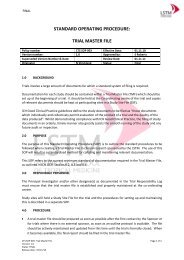Gender influences on child survival, health and nutrition: a ... - Unicef
Gender influences on child survival, health and nutrition: a ... - Unicef
Gender influences on child survival, health and nutrition: a ... - Unicef
You also want an ePaper? Increase the reach of your titles
YUMPU automatically turns print PDFs into web optimized ePapers that Google loves.
<str<strong>on</strong>g>Gender</str<strong>on</strong>g> Influences On Child Survival, Health And Nutriti<strong>on</strong>: A Narrative Review<br />
2 GENDER-SENSITIVE INTERVENTIONS ADDRESSING<br />
CHILD HEALTH AND NUTRITION<br />
Introducti<strong>on</strong><br />
This secti<strong>on</strong> addresses the questi<strong>on</strong> “Which approaches to addressing the impact of gender inequalities,<br />
roles <strong>and</strong> relati<strong>on</strong>s <strong>on</strong> young <strong>child</strong> <strong>survival</strong> have been assessed <strong>and</strong> with what results?” as outlined in the<br />
introducti<strong>on</strong> to this document. In order to achieve this, we have reviewed evaluati<strong>on</strong>s of interventi<strong>on</strong>s<br />
which have used an aspect of gender-awareness in their interventi<strong>on</strong> design with the aim of addressing<br />
issues around <strong>child</strong> <strong>health</strong> <strong>and</strong> nutriti<strong>on</strong>.<br />
As highlighted in the methods secti<strong>on</strong> we c<strong>on</strong>ducted an extensive search using a number of databases<br />
<strong>and</strong> h<strong>and</strong> searching journal issues as well as c<strong>on</strong>tacting 42 gender <strong>and</strong> <strong>health</strong> experts <strong>and</strong> accessing over<br />
20 websites to ensure we had covered academic <strong>and</strong> ‘grey’, n<strong>on</strong>-academic literature. Despite using this<br />
combinati<strong>on</strong> of methods we have identified <strong>on</strong>ly 4 evaluated interventi<strong>on</strong>s, plus a review of 20<br />
c<strong>on</strong>diti<strong>on</strong>al <strong>and</strong> n<strong>on</strong>-c<strong>on</strong>diti<strong>on</strong>al cash-transfer programmes (see Annex I for a table summarizing these<br />
evaluati<strong>on</strong>s <strong>and</strong> their findings). While there are important examples of evaluati<strong>on</strong>s of interventi<strong>on</strong>s<br />
which have encompassed aspects of gender in relati<strong>on</strong> to maternal <strong>and</strong> reproductive <strong>health</strong>, more<br />
needs to be d<strong>on</strong>e to plan <strong>and</strong> evaluate gender dimensi<strong>on</strong>s of <strong>child</strong> <strong>health</strong> <strong>and</strong> nutriti<strong>on</strong> initiatives.<br />
The following secti<strong>on</strong>s explore these interventi<strong>on</strong>s in three categories: first, those addressing service<br />
delivery; sec<strong>on</strong>d, those addressing community participati<strong>on</strong>; <strong>and</strong> third, those bey<strong>on</strong>d the realm of <strong>health</strong><br />
<strong>and</strong> nutriti<strong>on</strong> programmes, addressing social protecti<strong>on</strong> <strong>and</strong> financial inclusi<strong>on</strong> (e.g. cash transfers <strong>and</strong><br />
micro-credit schemes). It is important to note that although most of the interventi<strong>on</strong>s identified do not<br />
explicitly refer to the c<strong>on</strong>cept of gender in their descripti<strong>on</strong> of their activities, they have been included<br />
because their approach implicitly addresses dimensi<strong>on</strong>s of gender explored in the review.<br />
2.1 ADDRESSING SERVICE DELIVERY<br />
Service delivery through facility-based services produces c<strong>on</strong>siderable barriers that are gendered <strong>and</strong><br />
structural <strong>and</strong> relate to women’s freedom to travel, the distance they might be required to travel <strong>and</strong><br />
the costs incurred through user fees. Furthermore, facilities are not always male-friendly <strong>and</strong> may place<br />
emphasis <strong>on</strong> women to attend, thus discouraging parents to share resp<strong>on</strong>sibility for accessing<br />
<strong>health</strong>care for their <strong>child</strong>ren.<br />
GENDER SENSITIVE INTERVENTIONS<br />
There are other issues in expecting women to use facility-based services. As seen in secti<strong>on</strong> 1.3.1 of the<br />
review, <strong>on</strong>e of the problems with encouraging women to engage in paid labour through microcredit<br />
schemes lies in the potential for such ‘extra’ work to impede <strong>on</strong> women’s already tight schedules. This<br />
potential clash of ‘benefits’; <strong>on</strong>e being increased income for women <strong>and</strong> their families; the other being<br />
their access of <strong>health</strong>care provisi<strong>on</strong> for their <strong>child</strong>ren; may be addressed through the provisi<strong>on</strong> of such<br />
<strong>health</strong>care services at more appropriate times or in more appropriate places for women <strong>and</strong> their<br />
families.<br />
50



